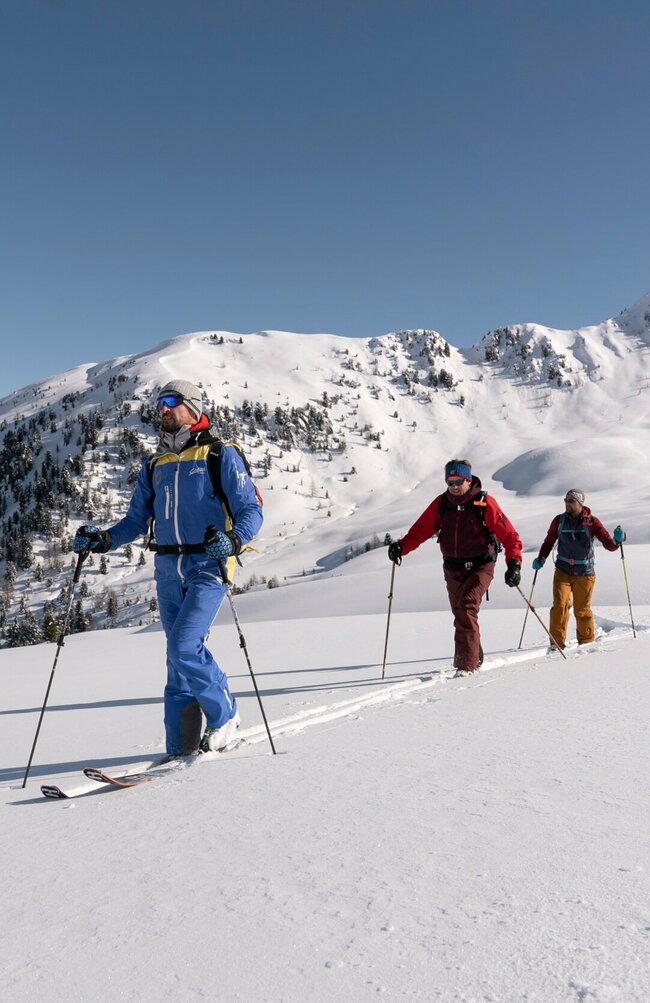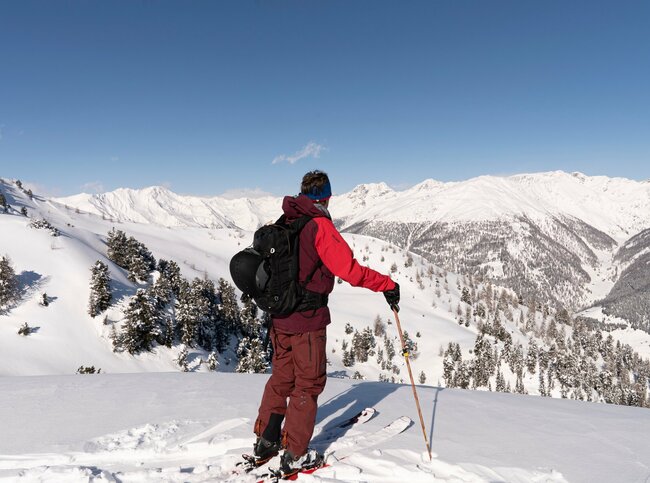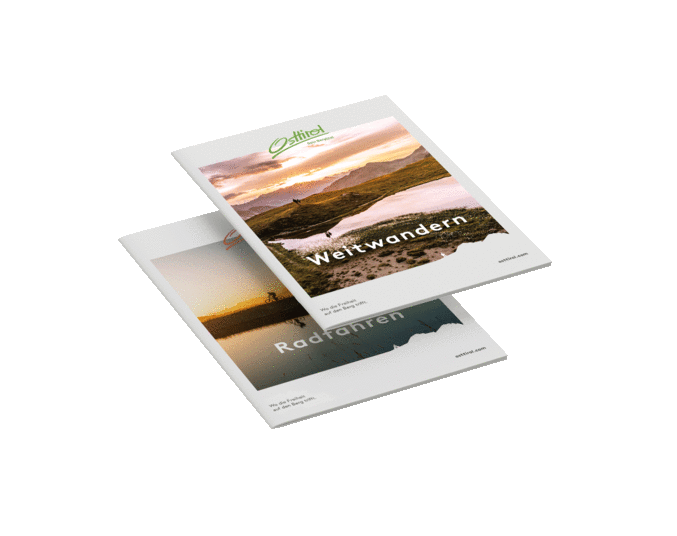“Getting around is actually quite easy”, explains Arthur Bucher, who knows the terrain like the back of his hand. There are generally hiking signposts which point out the route to tour destinations. Many of the routes in Villgratental are between 800 and 1000 metres altitude and are of moderate difficulty level. One particularly nice tour for beginners is to the Gaishörndl (2615 metres), which, incidentally, the locals like to head for on the night of a full moon. From Kalkstein – a hamlet which is part of Innervillgraten – proceed initially through the larch forest, climbing gently via the Alfenalm to the head of the valley; continue then in hairpin bends up to the summit, which you’ll get to after some three hours and some 1000 metres altitude. A superb deep snow run takes you back to the starting point and Gasthaus Badlalm. Gather here and enjoy some Osttirol specialities, like ‘Schlipfkrapfen’, a type of ravioli, and talk shop with landlord Walder Gebhard, a keen tourer who has a certain feel for the snow.
Even when ski mountaineers are often individualists, “For safety reasons you should never set off by yourself”, stresses Arthur Bucher and points out that in Villgratental, if necessary, you’ll make friends fast: “Everything is still straightforward with us – you’ll find like-minded people quickly.“ For absolute novices in the valley of tourers, Bucher recommends a guiding day with the mountain school to familiarise yourself with the region’s special features. His personal favourite mountains include the Rote Kinkele (2763 metres), which tourers will get to in four hours after scaling some 1270 metres altitude. The start is at the beginning of the Almtal in Innervillgraten. Across the Lüfter- and Fürathöfe the route proceeds initially through the forest to the Kamelisenalm (1973 metres).








